 |
 |
 |
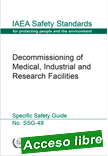 |
Decommissioning of Medical, Industrial and Research Facilities
IAEA Safety Standards Series No. SSG-49
Decommissioning is the last step in the lifetime management of an authorized facility and must be considered during the design, construction, commissioning and operation of such facilities.
This Safety Guide provides guidance on how to comply with requirements for the safe decommissioning of medical, industrial and research facilities.
|
. It addresses all aspects of decommissioning that are required to ensure safety, such as roles and responsibilities, strategy and planning for decommissioning, conduct of decommissioning actions and termination of the authorization for decommissioning. The intended audience are those individuals involved in policy and strategy development, regulatory control, and planning and implementation of decommissioning.
|
 |
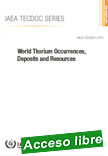 |
World Thorium Occurrences, Deposits and Resources
IAEA TECDOC No. 1877
Mindful of possible future limitations on the availability of uranium, the introduction of the thorium fuel cycle is potentially a complementary source of nuclear energy. This publication assimilates current knowledge of thorium geology and mineralization into a brief account on the worldwide occurrence of thorium resources. Although thorium is currently not commercially viable as a fuel, it is important to pre-emptively assess thorium related information should that situation change.
|
Thus, the publication provides an overview of the variety of natural thorium deposit types with associated thorium geology and thorium resources. It reviews available data on thorium occurrences/deposits and thorium resources and presents a classification of deposits according to geological and economic criteria.
|
 |
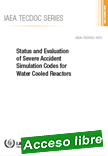 |
Status and Evaluation of Severe Accident Simulation Codes for Water Cooled Reactors
IAEA TECDOC No. 1872
Accurate prediction of source term and modelling of severe accident progression by severe accident analysis codes is integral to the safe operation of water cooled reactors in both developing and developed Member States. The source term released to the environment during severe accidents, calculated by these codes, is utilized by specialized atmospheric transport codes to evaluate the transport of radionuclides in the environment.
|
Though severe accident codes are comprehensively validated based on experiments, there remains disagreement among calculations performed using different codes for the same scenarios. Such differences and their causes are being explored by a number of organizations, including cooperation by developers through code to code benchmarks. Furthermore, severe accident phenomena model improvements are being made with insights from experiments and with the development of models to account for previously less understood phenomena. This publication summarizes the current status of severe accident analysis codes and recommends areas for research and development. The information is detailed in terms of major findings, identified gaps, and recommended future actions.
|
 |
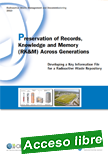 |
Preservation of Records, Knowledge and Memory (RK&M) Across Generations
Developing a Key Information File for a Radioactive Waste Repository
The NEA Radioactive Waste Management Committee (RWMC) has created an international initiative to address the challenge of preservation of Records, Knowledge and Memory (RK&M) across generations. Experience indicates that RK&M need to be actively managed from the start of waste management programmes. |
RWMC member organisations are committed to work together and support national programmes to move forward in this area. This report forms an integral part of the formal output of the NEA RK&M Initiative, which has issued a series of reports during its activities under the NEA RWMC auspices. It describes one component of the lasting record, known as the key information file (KIF). The concept of a KIF emerged in response to the challenge presented by the expected large volumes of RK&M material that national disposal programmes are likely to generate. The KIF is intended to form part of an integrated RK&M system, providing an overview of a single disposal facility, with enough information for educated readers to identify and appreciate the associated hazards. It is a single, short document, produced in a standard format across national programmes. Widely distributed and openly available, it is intended to be introduced in several languages.
|
 |
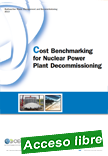 |
Cost Benchmarking for Nuclear Power Plant Decommissioning
NEA No. 7460
The report draws on the experience of NEA member countries in developing and implementing approaches for cost benchmarking suitable for nuclear decommissioning projects, including experiences in decommissioning other types of nuclear infrastructure (i.e. nuclear facilities other than NPPs). The report takes into account related developments in other industry sectors, such as oil and gas, some of which are better served by more mature cost benchmarking approaches than those in the nuclear sector. |
Particular focus is given to identifying key factors, drivers and constraints to implementing cost benchmarking in the context of nuclear decommissioning. These are addressed from a broad range of perspectives in order to help identify a path forward that might enjoy sufficiently broad support from a wide base of interested stakeholders. While the specific focus of this report is on the application of cost benchmarking in the context of NPP decommissioning, the methods and approaches considered herein are nonetheless intended to be generally applicable and therefore relevant – with suitable adaptions – to the decommissioning of all nuclear facilities.
|
 |
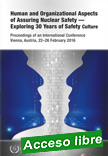 |
Human and Organizational Aspects of Assuring Nuclear Safety
Exploring 30 Years of Safety Culture
These proceedings present the outcome of an international conference, at which the nuclear community had the opportunity to reflect on the pivotal role that human and organizational aspects play in assuring nuclear safety. Held 30 years after the Chernobyl accident which led to the international adoption of the concept of safety culture, the conference provided distinguished experts and practitioners with a unique opportunity to share insights from the past and visions for a safer future.
|
The publication contains the conference opening and closing addresses, summaries of all conference sessions as well as the fully edited papers produced for the conference plenary sessions. The papers presented at the parallel sessions and dialogue sessions of the conference are included in their original form in the CD-ROM accompanying the publication.
|
 |
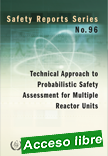 |
Technical Approach to Probabilistic Safety Assessment for Multiple Reactor Units
Safety Reports Series No. 96
The technical approach described in this publication builds on the use of a single unit probabilistic safety assessment (PSA) and identifies considerations that are needed from the multi-unit perspective. This is the first attempt to expand the current PSA process to take account of multi-unit issues, and has been done by distilling lessons learned from the Fukushima Daiichi accident and other multi-unit events, and by reviewing previous PSAs and supporting research that have addressed the risks of multi-unit accidents.
|
The publication provides a roadmap and methodology for performing a multi-unit PSA, proposes a set of site level risk metrics, and presents examples of approaches to resolve specific issues.
|
 |
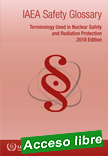 |
IAEA Safety Glossary:
2018 Edition
The IAEA Safety Glossary defines and explains technical terms used in the IAEA Safety Standards and other safety related IAEA publications, and provides information on their usage. The 2018 Edition of the IAEA Safety Glossary is a new edition of the IAEA Safety Glossary, originally issued in 2007. It has been revised and updated to take into account new terminology and usage in safety standards issued between 2007 and 2018.
|
The revisions and updates reflect developments in the technical areas of application of the safety standards and changes in regulatory approaches in Member States.
|
 |
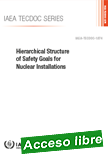 |
Hierarchical Structure of Safety Goals for Nuclear Installations
IAEA TECDOC No. 1874
This publication discusses the development and application of a hierarchical structure of safety goals encompassing high level goals and detailed technical requirements that may assist in forming a coherent and consistent approach to nuclear safety The suggested hierarchy of safety goals provides a practical approach to consistently embrace the set of safety-related requirements, both qualitative and quantitative, and develop the interconnections between them.
|
Specifically, the structure supports adding country specific safety goals (e.g. risk metrics) to the overall safety considerations in a consistent manner. This process can be aided by reference to the IAEA Safety Standards.
|
 |
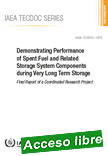 |
Demonstrating Performance of Spent Fuel and Related Storage System Components during Very Long Term Storage
Final Report of a Coordinated Research Project
This publication summarizes the work carried out during an IAEA coordinated research project (CRP) on safe and reliabe management of spent nuclear fuel. This work contributes to the overall goal of demonstrating the performance of spent nuclear fuel and related storage systems components over long durations, and facilitates the transfer of this knowledge to Member States.
|
The technical areas addressed by the CRP participants were related to potential degradation mechanisms in metal casks and concrete overpacks, such as stress corrosion cracking; long term integrity and performance of the fuel cladding; thermo-mechanical behaviour of the metal seals; and long term gamma and neutron shielding capability. The participants also considered past and ongoing demonstration programmes. For each technical topic addressed the main conclusions have been drawn, including information on the development of specific monitoring and inspection techniques as well as future opportunities for closing relevant data gaps. A major achievement is also the establishment of a worldwide network of experts working on current research projects to demonstrate the long term performance of spent fuel in dry storage systems.
|
 |
| |
|
|

|
|
|
| |
|
|
| |
| |
|
|
| |
| |
|
|
| |
| |
|
|
|
| |
| |
